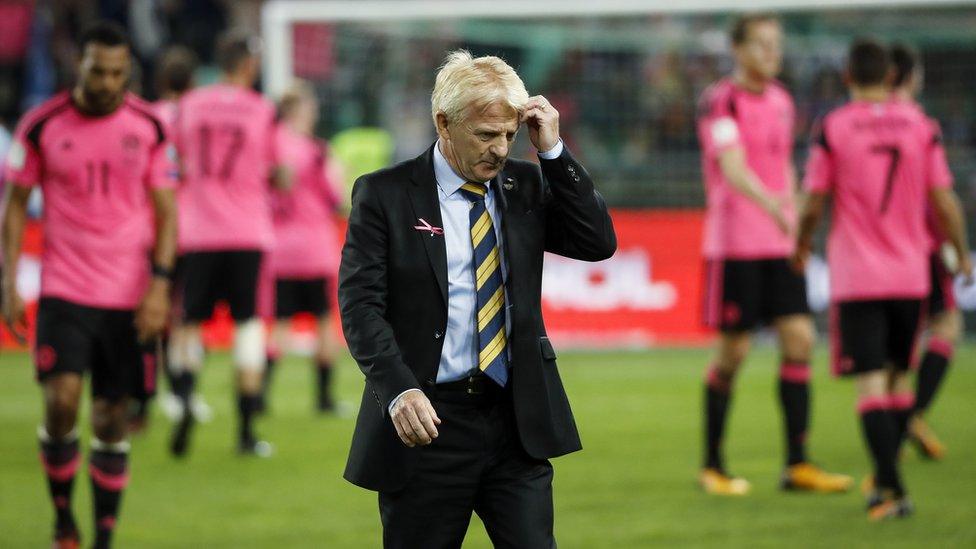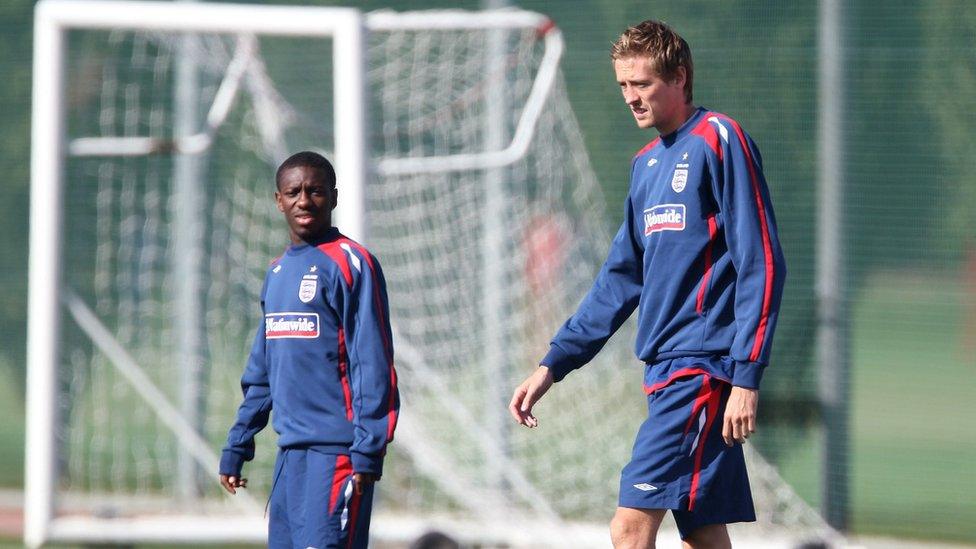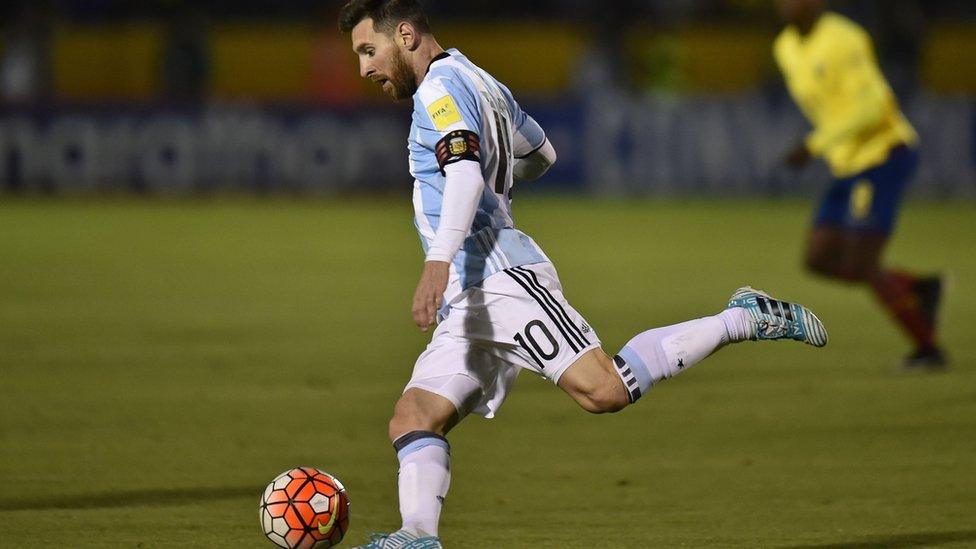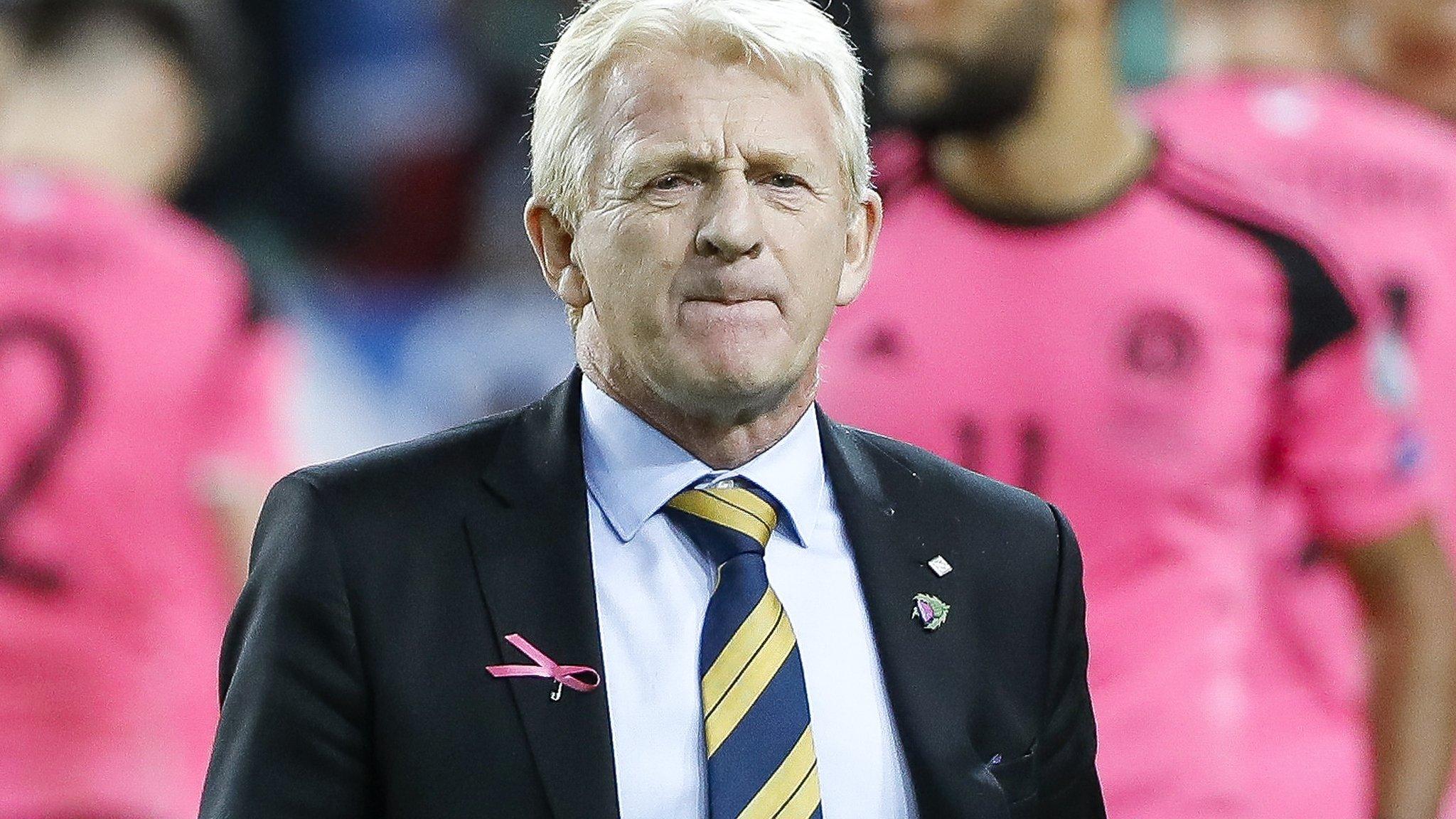World Cup 2018: Does height matter in football?
- Published

Gordon Strachan said genetics were to blame for Scotland's failure to beat Slovenia
The claim: Gordon Strachan, the former manager of Scotland, said after the country's failure to qualify for the 2018 World Cup in Russia that his team lacked the height and strength to compete, saying that Scotland were the second-shortest team "in the last campaign".
Reality Check verdict: In recent years, Scotland have been among the shortest teams in Europe, when measuring average height of the squad - but not the second-shortest. However, height in football doesn't necessarily lead to success.
After failing to lead Scotland to victory in their must-win World Cup qualifier against Slovenia, where did ex-manager Gordon Strachan lay the blame?
Scotland's opponents might not have been technically superior, but they had "height and strength" the Scots had been unable to combat, Strachan said.
"Genetically, we are behind," he said. "In the last campaign we were the second-smallest, apart from Spain."
Strachan's comments sparked a debate in the football world about whether Scotland, or any football team, needed more height in their team to succeed.
Reality Check looked at whether Strachan has a point.

Little and large. Shaun Wright-Phillips and Peter Crouch training for England.
Slovenia are one of the tallest teams in Europe. Scotland's starting XI in Ljubljana were, on average, more than 3cm (1in) smaller than their opponents.
Strachan's team, featuring players with an average height of 180.1cm, are actually in the top 10 of the "shortest" teams in Europe this year, according to research by the International Centre for Sport Studies (CIES) football observatory.
In fact, by the average measure, they are surpassed - or maybe undercut - by only Cyprus, Israel and Armenia, level with Spain.
Based on research by the CIES, which excludes seven countries (none of whom qualified), only two of the 10 shortest teams - Spain and France - will qualify for Russia 2018.
The height of footballers does not necessarily reflect the national trend. Dutch men are the tallest in world, but their football team is currently one of the shortest in Europe.

Lionel Messi, in action here for Argentina against Ecuador, is 170cm (5ft 6in) tall.
Seven out of the 10 tallest teams in 2017, excluding the World Cup hosts Russia, either qualified automatically - Serbia, Iceland, Belgium and Germany - or made the play-offs - Sweden, Greece and Denmark.
So it's certainly true that in the run-up to the World Cup, some of the tallest teams in Europe were in form this year.
But it's difficult to say whether these teams were successful because of their stature.
Strachan also claimed that Scotland had been the second-shortest team in their previous qualifying campaign (for Euro 2016). But they were in fact the sixth-shortest in 2015. The eventual winners of the tournament were Portugal, who were also one of the shortest teams, suggesting height was not necessarily a bar to success.
Globally, the top 10 shortest teams in 2015 contained some of the most successful football nations, and four World Cup winners: Brazil, Argentina, Uruguay and Spain.
Among the tallest countries, there was only one previous World Cup winner: Germany.
At the top of the list, with an average height of 1.86m, was Serbia.

Who has the tallest team? Average heights of European national teams in 2017.
This article has been updated since its original date of publication to reflect new data.



- Attribution
- Published12 October 2017
